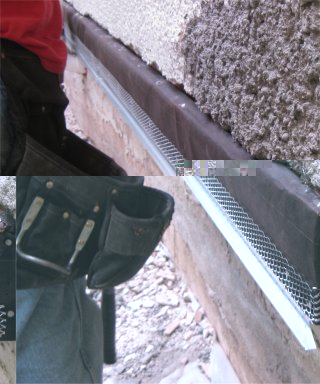
|
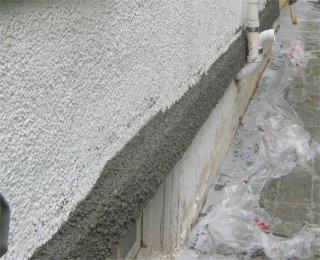
|
Bottom had crumbled and had been patched several
times in the last 93 years. A metal plaster stop supports the bottom
and hopefully prevents this from happening. Note how the stop extends
past the bottom. This provides a drip preventing water from running
back to the wall.
|
Finished band. Just like 1917
again.
|
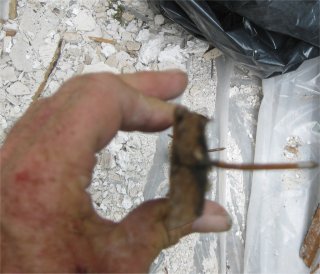
|
Interesting what our forefathers did. Wood lath
strips are cut at an angle towards the wall, formig a key.
|
Stucco
repair
|
Chevy
Chase, Maryland
|
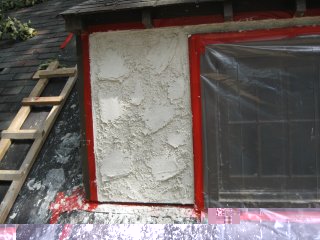
|
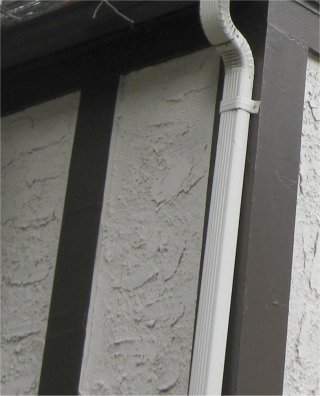
|
Dormer is stuccoed to match the rest of the house.
|
A view of the old house shows it matches pretty durn close.
|
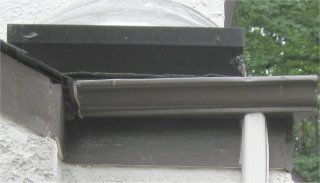
|
A source of another patch due to water damage.
End of gutter was put on higher than the roof,
allowing water to run down the wall instead of into the gutter.
Also note how the gutter slants the wrong way, away
from the downspout instead of intoo the downspout.
|
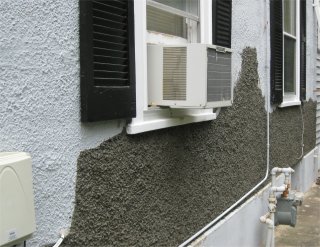
|
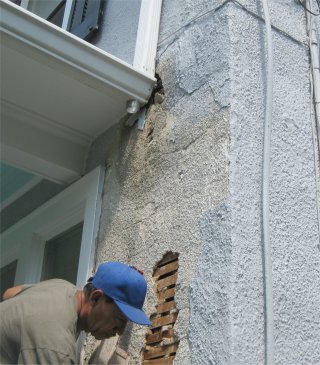
|
Another ugly bottom repaired.
|
Wall has deteriorated due to the lack of a kick out flashing.
A small pice of sheet metal would have prevented this. For more about
kick out flashings, please
click here.
|
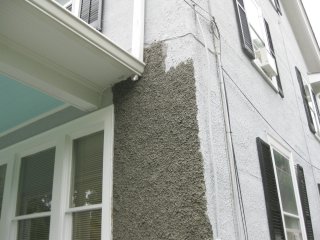
|
We put in a kickout and fixed
the wall.
This pebble dash stucco should last another 100 years or so.
|








